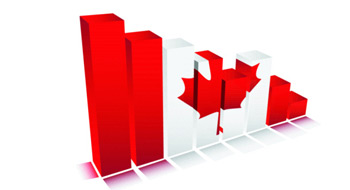
It was what it didn’t say that mattered most. Last month’s Bank of Canada statement cast Canada’s short-term prospects for growth in doubt while leaving rates untouched. No big surprise there. What did raise eyebrows, however, was the absence of previous warnings that rate hikes are imminent and could potentially harm debt-laden consumers—warnings that have been a steady presence in Bank of Canada guidance for months.
That silence spoke volumes. Gone are hints that tightening is around the corner. Front and centre is one key message for investors: sit tight, because this low interest rate environment isn’t going away any time soon.
It’s a far cry from the tapering talk that dominated back in the spring as policy-makers spoke of withdrawing stimulus on the back of solid economic data in the U.S. The struggle to reach a deal around the U.S. debt ceiling proved to be a setback as it rocked markets in October and raised questions about the sustainability of the slow and steady improvements we’ve been seeing in the U.S. economy over the last several months. Moreover, the U.S. government left us with prospects for more of the same in the coming months in the absence of a firm resolution on what to do about the debt ceiling longer term.
For plan sponsors, it all adds up to one thing: more interest rate volatility—at least for the foreseeable future. We could even see interest rates drop further, another blow to pension funds that were just used to the idea that rates are on the rise (along with their funded status).
Time to go beyond the border
For Canadian plans heavily invested in domestic fixed income, ongoing economic uncertainty makes it really hard to find what they need most: yield. Now more than ever before, Canadian plans must look beyond our border for bonds. Global opportunities in emerging market debt, corporate bonds and high yield can help plan sponsors get the returns they need while helping shield them from the havoc interest rate volatility is likely to play in the domestic bond market.
Considering Canada represents a lowly 2% to 3% of the global bond market, looking further afield for fixed income simply makes sense from a diversification perspective. The Barclays Global Aggregate Bond Index, one of the most commonly used measures of the performance of global fixed income, is almost 35 times the size of the Canadian DEX Universe Index. Even if we narrow the scope, it might surprise some that the U.S. high-yield fixed income market alone is about the same size as the Canadian DEX Universe Index but with almost twice the number of issues.
While the opportunity sounds compelling, however, Canadian plan sponsors must first focus on where to find the best risk-adjusted returns in their fixed income portfolio and what the best match is for their liabilities long term. And, in that respect, high-yield and emerging market bonds can be volatile.
The search for the best way to tap into the growing global bond market has led to a new focus on core-plus bond strategies, which offer the benefits of diversification and active management. Core-plus approaches allow managers to create a mix of fixed income assets that deliver better risk-adjusted returns. The trend has picked up a lot of steam in the U.S., and Canadians are just now beginning to kick the tires and review the benefits of a core-plus strategy.
But with policy-makers holding tight on low rates and more volatility on the horizon, the argument for core plus in a Canadian pension portfolio is stronger than ever. It’s a safer and simple way to break out of the home bias and explore the big wide world of fixed income beyond our own borders.
